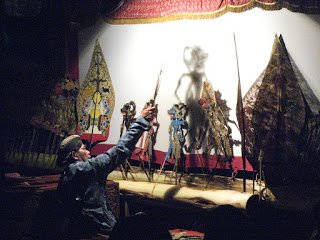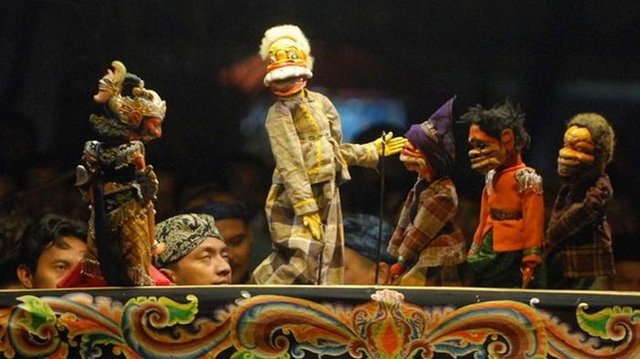Wayang Golek nu Ngagilek, Traditional Art that Existed for Centuries in Parahyangan Land
Howdy Steemians. It's been a while since my last post, and nobody missed me I know, but hey, it's good to be back.
Anyway, before I proceed to tell you my story, I would like to thank @sndbox and @aaronli for hosting such a great contest of cultural stories in #AboutMyCulture . That would encourage steemians from all over the globe to share us their local cultures and stories, which is excite me (personally).
So, tonight (or maybe today in other timezone) I'd like to share a story about Wayang Golek.
What is Wayang Golek you may ask? Well, keep reading!
Let's start with the Etymology.
The term 'wayang' is the Javanese (the largest ethnic in Indonesia) word for shadow, or bayang in standard Indonesian; the word also means "imagination".
Wayang also known as Wajang, is a form of puppet theatre art found in Indonesia and other parts of Southeast Asia, wherein a dramatic story is told through shadows thrown by puppets and sometimes combined with human characters. The art form celebrates the Indonesian culture and artistic talent.
So yeah, in other word it's a puppet show.
Wayang itself has different styles and forms, unique to their place of origin. The most known one are Wayang Kulit that originated from Java.

A Dalang performing wayang kulit performance
image source
In other hand, wayang golek are three-dimensional wooden rod puppets that are operated from below a wooden rod that runs through the body to the head, and by sticks connected to the hands. The puppeteer that perform of wayang is known as Dalang. The most famous dalang family is the Sunarya family which has produced several generations of stellar performers. The construction of the puppets contributes to their versatility, expressiveness and aptitude for imitating human dance. Today, wayang golek is mainly associated with Sundanese culture of West Java. Pawayangan or wayang performance mostly performed in Basa Sunda (Sundanese language), but it's not limited to that. It also usually performed in Bahasa Indonesia, when it's aired in National TV Channel, or even in Spanish, when it performed in Mexico.

Wayang Golek performance
image source
A little history
Little is known for certain about the history of wayang golek, but scholars have speculated that it most likely originated in China and arrived in Java sometime in the 17th century. Some of the oldest traditions of wayang golek are from the north coast of Java in what is called the pasisir region. This is home to some of the oldest Muslim kingdoms in Java and it is likely the wayang golek grew in popularity through telling stories of Amir Hamza, the uncle of Muhammad. Legendary origins of wayang golek attribute their invention to the Muslim saint Wali Sunan Kudus, who used the medium to proselytize Muslim values.
In the 18th century the tradition moved into the mountainous region of Priangan (or Parahyangan) West Java where it eventually was used to tell stories of the Ramayana and the Mahabharata in a tradition now called Wayang Golek Purwa, which can be found in Bandung, Bogor and Jakarta.

Arjuna, son of Indra, the king of Celestials. One of wayang golek's character from Mahabarata story
image source
In modern days, pawayangan's not only tell stories about mythology, but also used to entertain the viewer with comedy stories.

Picture of Astrajingga, widely know as si Cepot, one of wayang golek's character with comedic nature
image source
I honestly think I missed a lot of details about this subject. I'd really appreciate it if anyone could correct or maybe add some details into my post through comment section. An upvote would be really appreciated as well.
Well, that's all folks. Thank you for reading.
See you in next post. Cheers!
Dear friend, you do not appear to be following @artzone. Follow @artzone to get a valuable upvote on your quality post!